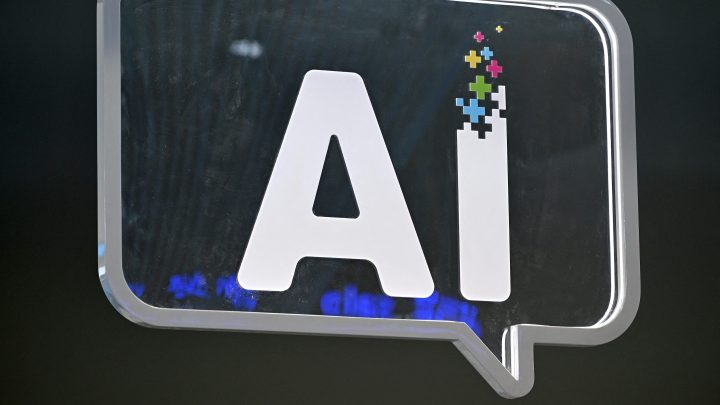
Need to get a grip on AI? There are classes for that.

When generative AI tools like ChatGPT first came out, Autumn Melcer’s team of copywriters and graphic designers flirted with the technology, even though many of them were scared by it.
Melcer also had mixed feelings. But she knew it was time to get into a more committed relationship with artificial intelligence when she spotted a competitor agency trumpeting how they use it in a blog post.
“If they’re touting it in their blog posts, it’s a big marketing tool for them,” said Melcer, a creative director for TrueSense Marketing, which helps nonprofits with fundraising and media campaigns. “And so I’m like, ‘Hey, this is something we’ve got to leverage as an agency.'”
Melcer said her company was already doing much of what their competitor was touting. But she still felt compelled to enroll in several AI training courses to get a firmer grip on how her company should approach the tech.
There was LinkedIn’s “Generative AI Skills for Creative Content,” which came as part of her paid subscription. There was Simpliv’s “ChatGPT for Marketers, Content Creators and Social Media Managers” for $149.
“They’re everywhere,” Melcer said. “I mean, every day I get a new course almost that’s being advertised to me.”
Melcer estimates she’s spent over 10 hours on multiple webinars and paid hundreds of dollars for them in total. She has a few more lined up she’s excited to attend.
She said half have been pretty good; the other half, basically a waste.
But overall, the courses have eased her AI anxiety.
“It’s the enemy you don’t know that’s the scariest, though, right?” Melcer said. “And that’s why we’re going down this path.”
That mix of fear and excitement about artificial intelligence has been pretty lucrative for the online “upskilling” industry.
“In 2023, someone enrolled on Coursera in [generative] AI content every minute,” said Marni Baker Stein, chief content officer for the online learning platform Coursera. “Every minute of the year.”
Rival online training marketplace Udemy says it’s had over 3 million enrollments in AI courses. It had a ChatGPT class up and running within 11 days of ChatGPT’s public debut.
Coursera’s Baker Stein said because artificial intelligence could touch just about every industry, the training and retraining opportunities tailored to specific jobs are basically endless.
“UX designer, or project manager, or attack and defense specialist in cybersecurity,” Baker Stein said. “All of these roles are being massively impacted by generative AI now, so existing content we have in those areas is being rethought and refurbished.”
That includes roles like teacher.
Jules White is the instructor for a Coursera training called “Innovative Teaching with ChatGPT.” He’s also a computer science professor at Vanderbilt University.
A lot of what White teaches is “prompt engineering,” which is basically the art of crafting questions and commands to get the AI to do what you want.
“This is like the most fundamentally democratizing moment in computing, where anybody can go in and they can have the power of a programmer without having to know how to program,” White said.
Powerful tools like ChatGPT and Midjourney are designed to be user-friendly. So can’t you just learn by doing?
White said prompt engineering really isn’t as simple as it sounds — there are tricks and tips to learning how to interact with artificial intelligence, even if no coding is required.
Also, most of his courses are designed to get users excited about how to amplify their own creativity with AI, not just how to automate tedious tasks, he said.
“Some people learn best through a course. And so it depends on what you’re learning style is, the way to do it,” White said.
It’s too early to judge how effective these courses might be in future-proofing workers, said economist Raffaela Sadun at Harvard Business School.
AI is young, she cautioned. Years from now, a course like “ChatGPT for Content Creators” may sound as silly as “An Expert Guide to Using Your Pager.” So courses should focus less on technical skills and more on broader conceptual learning.
“The risk is that you learn something now, and six months from now, it’s already obsolete,” Sadun said.
She said generative AI will require more than retraining white-collar workers how to think about their jobs; it’ll require retraining how they think about themselves. Take the example of a writer.
“As a writer, are you going to accept that ChatGPT may provide you with some ideas, some creative ideas, and then your role is not any more to come up with these ideas, but it’s to select or refine ideas that were provided to you by a technology?” Sadun said. “And this is a very different way of doing work.”
There’s a lot happening in the world. Through it all, Marketplace is here for you.
You rely on Marketplace to break down the world’s events and tell you how it affects you in a fact-based, approachable way. We rely on your financial support to keep making that possible.
Your donation today powers the independent journalism that you rely on. For just $5/month, you can help sustain Marketplace so we can keep reporting on the things that matter to you.

















